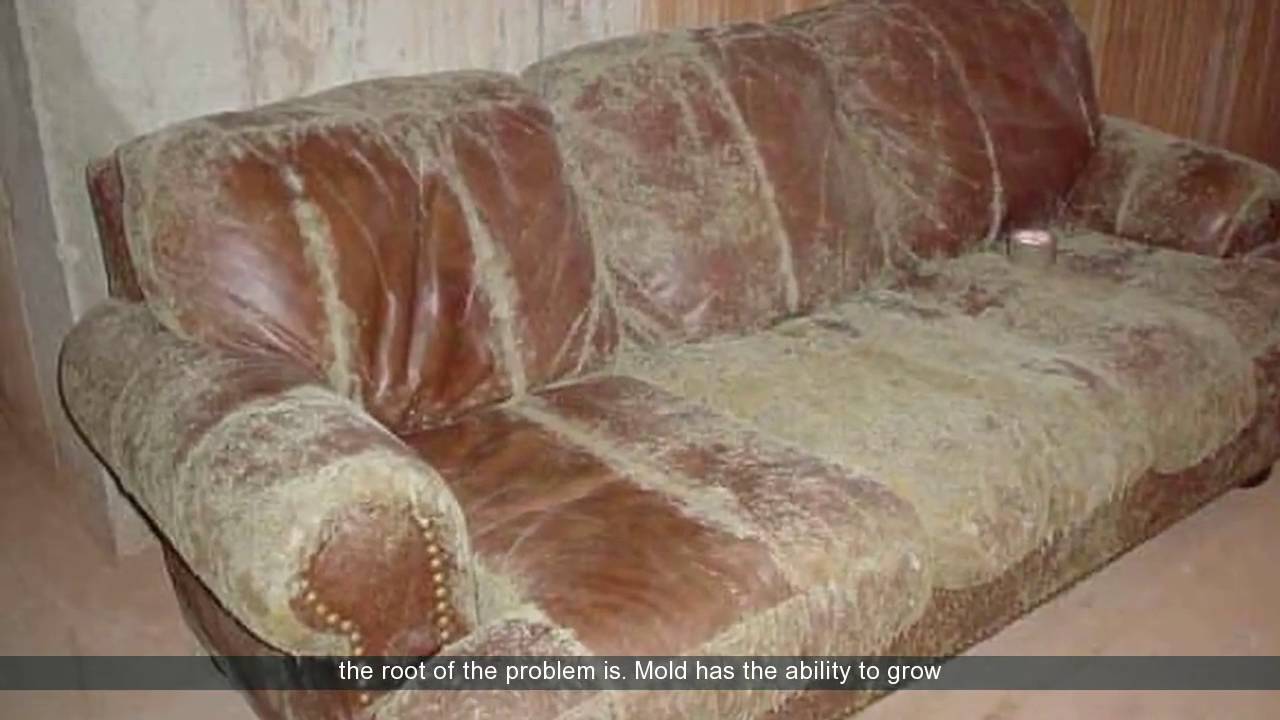Tips To Remove Mold From Leather
Leather is beautiful, timeless, and luxurious—but when mold finds its way onto your favorite leather items, it can feel like a nightmare. Mold not only damages leather but can also harm your health. Whether it's your leather jacket, shoes, purse, or couch, taking action quickly can save your prized belongings and keep you safe.
Leather is a natural material, and while its texture and look make it appealing, these same qualities also make it vulnerable. Mold thrives in conditions that are warm, damp, and poorly ventilated. Leather, being porous, can easily absorb moisture from the air or from spills. Once mold starts growing, it not only spreads rapidly but can also weaken the material, leaving unsightly stains and a musty odor.
In this blog, we’ll explore simple, practical steps to remove mold from leather. We’ll also discuss why mold grows on leather, how to prevent it, and when you should consider reaching out to a mold detection company. By the end of this post, you’ll feel confident about handling this issue, whether you’re tackling it yourself or seeking professional help.
Why Does Mold Love Leather So Much?
Leather’s porous nature makes it a perfect home for mold. It absorbs moisture, and when combined with warm temperatures, it creates the ideal breeding ground for those pesky spores. But why does mold seem to love leather specifically, and what makes it different from other materials? Let’s break it down:
Leather’s Porous Structure
- Leather is a natural product, often made from animal hide. Its surface is filled with tiny pores that allow it to "breathe." While this property makes leather comfortable to wear or use, it also means that moisture can easily seep in. Once moisture is trapped inside these pores, mold spores—which are naturally present in the air—can latch on and begin to grow.
High Humidity Levels
- Humidity is one of the biggest culprits when it comes to mold growth. In areas of high humidity, leather items in closed, unventilated spaces often develop a musty smell over time. That’s mold at work.
Improper Care And Storage
- Many people don’t realize that leather needs proper care to stay in good shape. Storing leather in dark, damp, or unventilated places, like basements or attics, can foster mold. Spills that aren’t cleaned up promptly can also contribute, as they provide the moisture mold needs to thrive.
Understanding why mold grows on leather is the first step to preventing it. By addressing these underlying issues, you can protect your leather items from future problems.

Step-By-Step Guide To Removing Mold From Leather
Removing mold from leather can seem daunting, but with the right approach, it’s entirely doable. Follow these steps carefully to restore your leather items to their former glory:
Step 1: Gather Your Supplies
Before tackling the mold, make sure you have everything you need. Here’s a handy table to help organize your supplies:
| Item | Why It’s Needed |
| Soft-bristled brush | To gently loosen mold without damaging the leather. |
| Mild soap or leather cleaner | Cleans and conditions leather while removing dirt and oils. |
| White vinegar | A natural mold-killer that’s safe for leather when diluted. |
| Microfiber cloths | Soft and non-abrasive for wiping down leather. |
| Rubbing alcohol (optional) | For stubborn mold spots that require extra care. |
| Leather conditioner | Restores moisture and protects the leather after cleaning. |
| Gloves and mask | Protect yourself from mold exposure during cleaning. |
Step 2: Prepare The Workspace
Cleaning mold can release spores into the air, so it’s essential to work in a well-ventilated area. Open windows or set up a fan to ensure good airflow. Lay down an old towel or tarp to protect your workspace from any debris or cleaning solutions.
If the mold is extensive, consider wearing gloves and a mask to protect yourself from inhaling spores. Mold exposure can sometimes cause allergic reactions or respiratory issues, so it’s better to be safe than sorry.
Step 3: Remove Surface Mold
Begin by using the soft-bristled brush to gently sweep away visible mold. It’s important to be gentle to avoid scratching or damaging the leather. Brush in small, circular motions, and be sure to clean the brush frequently by shaking it outdoors. This prevents spores from spreading inside your home.
Step 4: Clean The Leather
Now it’s time to clean the leather. Mix a solution of one part white vinegar to three parts water. Dampen a microfiber cloth with the solution and wring it out well. You want the cloth to be slightly damp, not wet, as excess moisture can damage the leather further.
Gently wipe the leather surface with the damp cloth, focusing on areas where mold is visible. For more delicate or high-end leather, consider using a specialized leather cleaner instead of vinegar. These cleaners are formulated to be gentle on leather while effectively removing dirt and oils.
Step 5: Dry Thoroughly
Once the leather is clean, it’s crucial to let it dry completely. Place the item in a well-ventilated area away from direct sunlight or heaters. Direct heat can cause the leather to dry out and crack, so patience is key. Proper drying is essential to ensure that no moisture remains, as this could lead to new mold growth.
Step 6: Condition The Leather
Finally, use a high-quality leather conditioner. This will restore moisture and keep the leather soft and shiny. Conditioning also creates a protective barrier that helps prevent future mold growth. Follow the manufacturer’s instructions for the best results, and buff the leather gently with a clean microfiber cloth.
DIY Vs. Professional Help: When To Call A Mold Remediation Company
Sometimes, the damage may be too extensive for DIY solutions. If the leather item smells musty, has black mold stains or cleaning attempts fail, it’s time to call in professionals. A mold detection company can:
- Perform a thorough mold testing and inspection to assess the extent of the problem.
- Use specialized tools to remove mold without harming the leather.
- Offer advice on preventing future issues.
For black mold or severe cases, get professionals. They will remove the mold and make the item safe to use. Professionals are better equipped to handle large, delicate leather items. These include furniture, which can be tough to clean at home.
Tips To Keep Leather Mold-Free
Preventing mold is always easier than dealing with it later. Here are some practical tips to keep your leather items mold-free:
Proper Storage Matters
- Always store leather items in a cool, dry place. Avoid areas like basements, which are often damp.
- Use silica gel packets or dehumidifiers to reduce humidity levels in storage spaces. These inexpensive tools can make a big difference in keeping moisture at bay.
- Consider using breathable garment bags for leather jackets or purses. Plastic covers can trap moisture, which encourages mold growth.
Regular Cleaning
- Make it a habit to wipe down leather items monthly with a damp cloth. This simple step removes dust and dirt that can hold moisture.
- Use a leather cleaner every few months to maintain the material’s cleanliness and condition. Regular care can prevent mold before it starts.
Mold Prevention Products
- Invest in mold-resistant sprays designed for leather. These sprays create a protective barrier that makes it harder for mold to take hold.
- Always test products on a small, inconspicuous area first to ensure they don’t cause discoloration or damage.
Using these tips can cut mold risk. It will keep your leather items looking their best.
Black Mold On Leather: A Special Case
Black mold is very harmful. It can lead to health problems like respiratory issues, headaches, and fatigue. If you suspect black mold on your leather items, handle it with care:
- Avoid direct contact with the mold; wear gloves and a mask.
- Use stronger cleaning solutions like diluted rubbing alcohol. Mix one part rubbing alcohol with one part water, and use a microfiber cloth to gently clean the affected area.
- If the mold persists or spreads, consider professional black mold inspection services. Professionals have the tools and expertise to safely remove black mold without damaging your leather.
Black mold is more than just an aesthetic issue; it’s a health hazard. Taking quick action can protect both your belongings and your well-being.
Finding Peace With Mold-Free Leather
Caring for leather can feel overwhelming when mold strikes, but it’s entirely manageable with the right tools and approach. By following these steps and keeping your leather clean and dry, you can enjoy your items for years to come. If it feels out of hand, mold experts are a call away to restore your belongings.
With consistent care and a little vigilance, you can keep mold at bay and ensure that your leather items remain a source of pride and joy. Happy cleaning!
